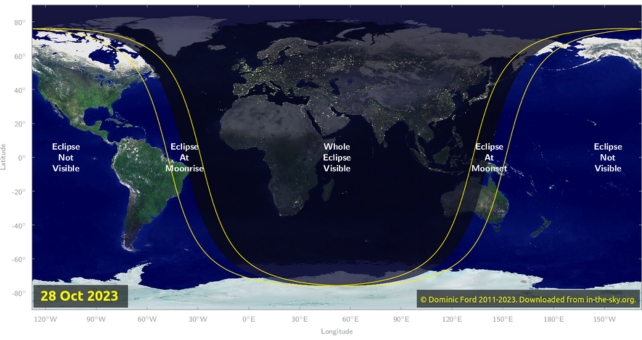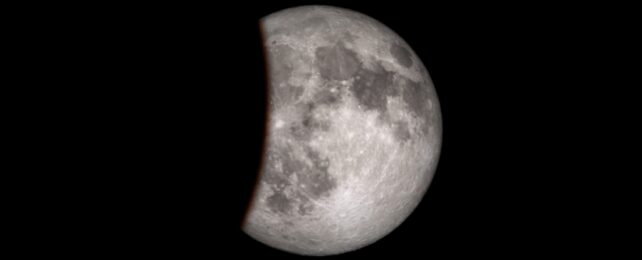This month has given us some truly breathtaking sky displays, and the weekend ahead holds another treat. On October 28, the Moon will put on a spectacular show in the form of a partial lunar eclipse.
Known as a 'Hunter's Moon' in the Northern Hemisphere, folklore holds that the bright end to the October lunar cycle once would have provided the perfect evening light to track summer-fattened game before winter.
This month, that famous light will dim as the Moon passes through Earth's shadow, with the resulting eclipse visible across much of the Eastern Hemisphere. This includes Europe, Africa, Asia, Antarctica, and Oceania. Some of North and South America will be able to see it as well.
Lunar eclipses are simple to observe; all you need to do is go outside and look up. Binoculars or a small telescope can improve your view, but they're not essential. For the best viewing, find a dark place with a clear sky.
The main event starts at 15:36 EDT (19:36 GMT) and ends at 16:53 EDT (20:53 GMT).
Part of the Moon will be within Earth's darker inner shadow – the umbra – at the peak of the eclipse, producing the characteristic reddish ' Blood Moon'. Even though only 6 percent of the Moon will be obscured, it will still be a stunning sight to behold.
The best views of the event will be in Europe, Africa, and Asia. While the Moon is high in the sky, observers in these spots can also see it move in and out of Earth's penumbra – the outer, paler shadow.
Some parts of the US, including New York, Alaska, and North Carolina, will see the tail end of the eclipse. The Moon will be below the horizon during the earlier stages, so skywatchers will only be able to see the second penumbral stage.
In-The-Sky.org has put together this map showing where on the planet you can see the partial lunar eclipse. It may still be worth looking up, even if you're not in the optimal viewing area.

Each lunar eclipse is visible from half of Earth. When Earth is positioned precisely between the Moon and Sun, Earth's shadow falls on the surface of our lunar satellite and obscures the Moon's usual source of illumination, which is sunlight.
A partial lunar eclipse occurs when just a small portion of the Moon is covered by Earth's shadow. The alignment of the Sun, Earth, and Moon determines what's visible to people on Earth. It might look like Earth takes a sneaky bite out of the Moon.
There is something for everyone, too, because while the Moon rises, Jupiter will be shining brightly next to it, making both objects visible from any location on Earth.
The best visibility of the gas giant will be on November 2 at opposition, when Earth is directly between it and the Sun. You could think of it as a 'full Jupiter' at this point.
Both Earth and Jupiter orbit the Sun in nearly the same plane, but while Earth's orbit takes one year, Jupiter takes 11.9 times as long. Their orbits are almost circular, with a slight elliptical 'squish'. At Earth's yearly orbital overtake of Jupiter, the gap between the two planets shifts.
Jupiter is only 595 million kilometers (370 million miles) away from Earth this year (the average distance being 778 million km, or 484 million miles), making it extra visible throughout the night for the few weeks before and after opposition. It's an excellent time to take a look at our Solar System's largest planet.
